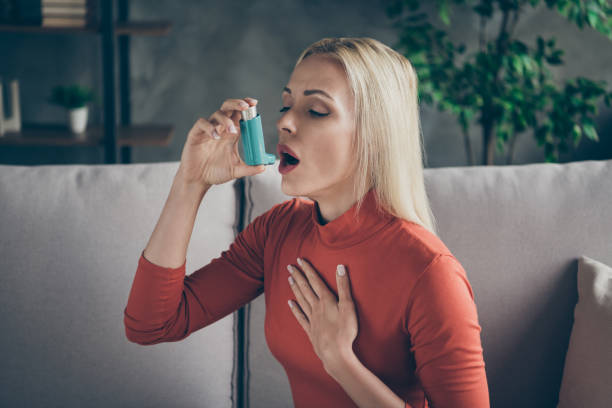
You are aware of the impact of high pollen levels if you are one of the millions of individuals with seasonal allergies. Fortunately, you can track the pollen levels in your neighborhood and improve your preparedness by using any smart phone, tablet, or computer.
Specific periods of the year are when seasonal allergies affect people the most. Since plants get active again in the spring and release a bunch of plant matter into the air quality forecast, it can be particularly difficult. One of the main offenders is pollen, and there are many ways to measure pollen levels and other air contaminants.
How Is a “Pollen Count” Calculated and What Does It Mean?
The terminology we commonly use to quantify the amount of pollen inside the air is “Pollen Level” and “Pollen Count.” Let’s quickly look at how this is assessed and accurate because you might be curious.
A “roto-rod sampler” tool can measure the amount of pollen in the air. It is an apparatus with rods covered in a sticky material. After spinning and gathering pollen for a while, the rods are checked for pollen.
For instance, the main screen of the Weather Channel app for iPhone, iPad, and Android has a card labeled “Health & Activities.” You may instantly examine a prediction for the following 15 days and your neighborhood’s current allergy forecast.
We propose the app “Clarify” for something more allergy and pollen focused. It is compatible with Android, iPhone, and iPad gadgets. It provides a forecast as well as current levels. In addition to grass and weeds, it describes the many pollen kinds. You can even set up an account and keep track of your emotions.
Many websites track pollen levels if you don’t want to download an app, particularly for that purpose. On the home screen of your smart phone, you can even create shortcuts. The 15-day prediction and several pollen kinds are included on The Weather Channel’s allergy forecast.
Pollen.com is a wonderful website as well. A map of the US will be presented to you right away. Just choose your area to zoom in and discover specifics on the pollen levels. You can see a score for today, yesterday, and the following five days after pulling up your area.
Ambee pollen API
Similar to the Air Quality series, this Pollen Latest API is designed to display the local pollen count in real-time.
The primary goal of this tool is to assist users or patients with allergies and allergy-related problems in planning itineraries to avoid locations with greater amounts of airborne pollination.
Ambee’s approach tracks and counts more than 25 different types of pollen locally to achieve this. The counts, which define corresponding risk levels for pollen from trees, grass, and weeds, are updated regularly.
Ambee offers several options for managing seasonal allergies in addition to Pollen Latest. The Pollen Forecast and Pollen History APIs, which extend Pollen Latest’s health feature, are also offered in our API Store. In our always growing library, accessible to the entire ecosystem, you will discover all the tools required to provide your patients and users with the greatest digital health.
The different kinds of pollen
Tree pollen is a typical cause of hay fever. • Around 95% of people’s hay fever is caused by grass pollen, which is normally at its peak between mid-May and July. It is the first pollen to be released throughout hay fever season, so levels are a huge upgrade between late March and mid-May. Additionally, there is substantial evidence that individuals with asthma are much more likely to require hospitalization while grass pollen is high. Weed pollen, which is most abundant from the end of June to September, can also cause hay fever.
Understand your pollen triggers and get ready for pollen season.
- Multiple types of pollen can cause allergies at different times of the year. Although different pollens are discharged at various times, it isn’t easy to anticipate when exactly due to our variable weather. If you experience hay fever symptoms throughout the year, you may possess non-allergic rhinitis or the other allergy.
- If you suffer from hay fever frequently and take antihistamines, immediately take these approximately four weeks before you typically experience symptoms.
- If you typically use a steroid nasal spray, this can take up to two weeks to begin working, so start using it before your specific pollen trigger is released. Beginning them early means that when pollen is released, the medicine has already built in your bloodstream; therefore, you may be less likely to react.
Utilize the pollen calendar
Take note of the weeks and days when your symptoms are the worst to determine which pollen triggers your hay fever. Use our pollen calendar to find out which pollen might be your trigger and when it will likely be released.
- Always have your relieving inhaler on you. It’s also possible to call this your rescue inhaler. It’s crucial to always have your reliever inhaler on hand because this work fast to soothe the muscles in your airways & immediately reduce asthma or COPD symptoms.
- Follow all preventive or maintenance medication instructions daily. This will lessen the likelihood of a pollen reaction in your lungs. This is especially important for people with asthma because asthma suppressant inhalers contain a small amount of steroid that reduces the inflammation that pollen and another trigger.
- Use antihistamine tablets, nasal sprays, or steroid nasal spray to treat hay fever symptoms. There are several different hay fever medications available. You can get advice from your pharmacist on what to attempt.
